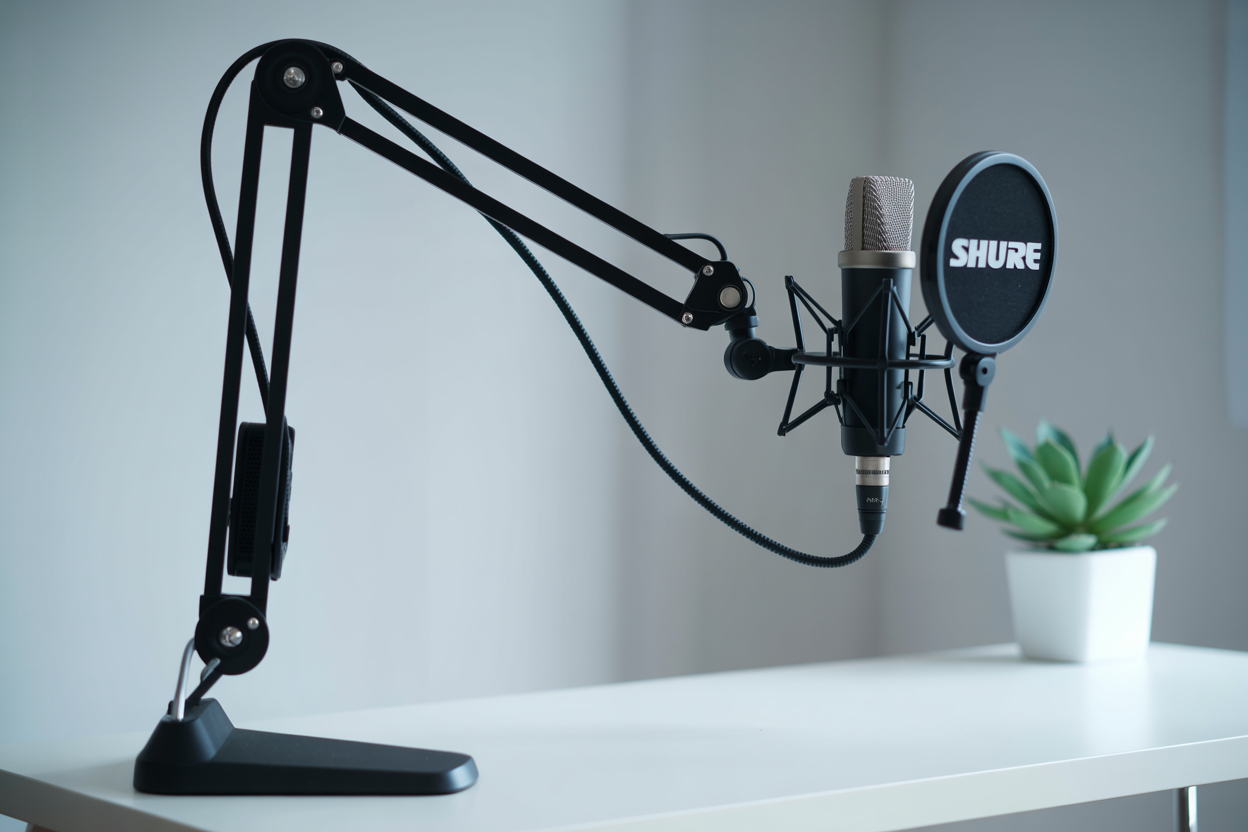The world of professional audio recording is filled with choices—from microphones and interfaces to stands and adapters. For podcasters, musicians, voice-over artists, and content creators, capturing high-quality sound is crucial. One often overlooked but essential component of a well-functioning recording setup is the adapter that connects your microphone to your boom or arm stand.
Among the commonly used microphones is the CAD GXL2200, a large-diaphragm condenser mic known for its affordability and solid performance. However, users often face a common issue: how to mount the GXL2200 securely onto a standard microphone arm stand. This is where the GXL2200 adapter comes into play.
This article explores the role of the GXL2200 adapter, how it works, why it’s important, and what options are available for connecting this microphone to an arm stand securely and efficiently.
About the CAD GXL2200 Microphone
Overview
The CAD GXL2200 is a large diaphragm condenser microphone designed primarily for vocal and studio applications. It features a cardioid polar pattern, which helps in reducing background noise and focusing on the sound directly in front of the microphone. Due to its affordability and solid sound quality, it is popular among entry-level and intermediate-level recording artists.
Key Features
-
Large diaphragm for warm, rich vocal tone
-
Cardioid pickup pattern for noise isolation
-
Shock mount included (in most packages)
-
Requires 48V phantom power
-
Durable metal construction
The Mounting Challenge
While the GXL2200 often comes with its own shock mount, many users prefer using a microphone arm stand for flexibility and better desk space management. However, connecting the shock mount or mic to a typical boom arm isn’t always straightforward. That’s where the adapter becomes essential.
What Is a Microphone Adapter?
Function and Purpose
A microphone adapter is a small but critical connector that allows you to attach your microphone or shock mount to a microphone stand or boom arm. These adapters usually modify the threading size to ensure compatibility between the mic and the arm.
Thread Sizes: The Compatibility Puzzle
Thread sizes can vary between regions and manufacturers. In general, you’ll find:
-
5/8″-27 threads—Common in the United States
-
3/8″-16 threads—more common in European gear
-
1/4″-20 threads—Found in some camera gear but less common in audio setups
The issue many users face with the CAD GXL2200 is that the shock mount that comes with it may not directly fit standard microphone arms, requiring an adapter to convert the thread sizes.
GXL2200 Adapter: Types and Use Cases
Direct Mounting vs. Shock Mounting
Before selecting an adapter, it’s essential to determine how you plan to mount the microphone:
-
Using the included shock mount—adds vibration isolation, but may require a thread adapter
-
Using a third-party universal shock mount – May already include compatible threading
-
Mounting directly to the mic stand (not recommended for condenser mics) – Generally avoids adapters but compromises on sound isolation
Common Adapter Types for GXL2200
-
3/8″ Female to 5/8″ Male Thread Adapter
-
Allows a shock mount with 3/8″ threading to fit on a 5/8″ threaded boom arm
-
Common when using European mounts on US arms
-
-
5/8″ Female to 3/8″ Male Adapter
-
Reverses the above; used when the boom arm has a 3/8″ thread and the shock mount is 5/8″
-
-
Universal Swivel Mount Adapters
-
Include adjustable angles, making mic placement easier
-
Useful in podcasting or broadcast setups
-
-
Quick Release Adapters
-
Provide fast mounting/dismounting
-
Suitable for users who swap mics often
-
How to Choose the Right Adapter for the GXL2200
Step 1: Identify the Thread Sizes
Inspect both your shock mount and your microphone arm stand. Most GXL2200 shock mounts are fitted with 5/8″ female threads, while some boom arms come with 3/8″ male threads.
Step 2: Check the Included Hardware
Some shock mounts include an internal adapter ring that can convert from 5/8″ to 3/8″ or vice versa. Check to see if this is already included before purchasing a separate adapter.
Step 3: Ensure Tight and Secure Fit
Loose adapters can cause mic sagging or vibrations. Look for high-quality metal adapters with tight threading and a knurled edge for hand-tightening.
Step 4: Compatibility with Boom Arm
Not all boom arms have the same thread pitch, even if the size is correct. Ensure that the threading is standard pitch (usually 27 threads per inch for 5/8”) to avoid damage.
Popular Adapter Options Compatible with GXL2200
-
On-Stage MA-100 3/8″ Male to 5/8″ Female Adapter
-
Durable and reliable
-
Budget-friendly
-
-
Neewer Microphone Thread Adapter Set
-
Includes multiple thread sizes
-
Great for users with multiple mics and arms
-
-
Rode Thread Adapter Kit
-
Premium construction
-
Comes in a storage case with multiple thread options
-
-
InnoGear Microphone Mount Adapter
-
Compatible with Blue Yeti, GXL2200, and more
-
Good fit for podcasting setups
-
Installation Guide: Connecting the GXL2200 to a Microphone Arm Stand
Tools You Might Need
-
Adjustable wrench (optional)
-
Cloth or rubber grip (for tightening)
-
The correct thread adapter
Step-by-Step Instructions
-
Identify the threads on your shock mount and mic arm.
-
Most GXL2200 shock mounts use 5/8″ female threading.
-
-
Select the correct adapter.
-
If your boom arm has a 3/8″ male thread, use a 3/8″ female to 5/8″ male adapter.
-
-
Screw the adapter into the shock mount (or mic arm).
-
Hand-tighten securely; avoid over-torquing to prevent thread damage.
-
-
Mount the shock mount onto the boom arm.
-
Ensure it is stable and doesn’t wobble.
-
-
Insert the GXL2200 into the shock mount.
-
Tighten the clasp or bands to hold the mic securely.
-
-
Adjust mic angle and tighten the joints.
-
Use swivel functions if available.
-
-
Test for movement or vibrations.
-
Ensure there is no mic sag or unintentional play.
-
Tips for Optimizing Your Setup
Add a Pop Filter
The GXL2200 picks up plosives easily. Use a pop filter mounted on your arm stand to reduce these artifacts during recording.
Use a Boom Arm with Internal Springs
Boom arms with internal springs reduce vibration noise and look cleaner on camera.
Consider a Universal Shock Mount
If the stock mount doesn’t fit well or feels flimsy, investing in a third-party universal shock mount may offer better compatibility and stability.
Manage Cables with Clips or Sleeves
Loose cables can tug on the microphone and introduce noise. Secure them neatly along the boom arm using Velcro straps or cable clips.
Common Issues and How to Solve Them
| Problem | Cause | Solution |
|---|---|---|
| The mic won’t screw into the arm. | Thread mismatch | Use appropriate adapter |
| The mic is loose or wobbly | Poor thread contact | Use a tighter-fitting adapter |
| Adapter stuck | Overtightened or cross-threaded | Use rubber grip to unscrew |
| The arm droops with mic weight | Arm not rated for weight | Upgrade to stronger boom arm |
| Mic noise when touching desk | Lack of isolation | Use shock mount and isolate the stand. |
Conclusion
While adapters may seem like minor accessories, they play a critical role in ensuring that your microphone setup is functional, stable, and professional. For GXL2200 users, selecting the right adapter can mean the difference between a frustrating setup and a seamless recording experience.
When purchasing an adapter, be sure to verify thread sizes, consider build quality, and always aim for a snug and secure connection. Whether you’re using your setup for podcasting, vocals, streaming, or voiceover work, the right adapter for your GXL2200 can help you achieve optimal sound and recording convenience.

